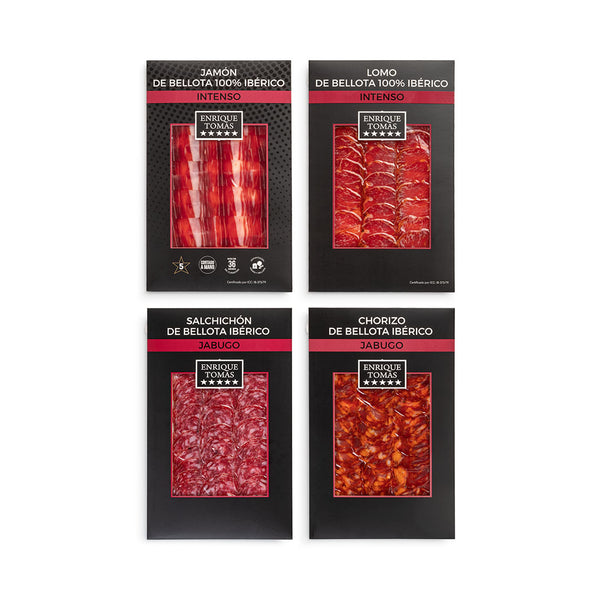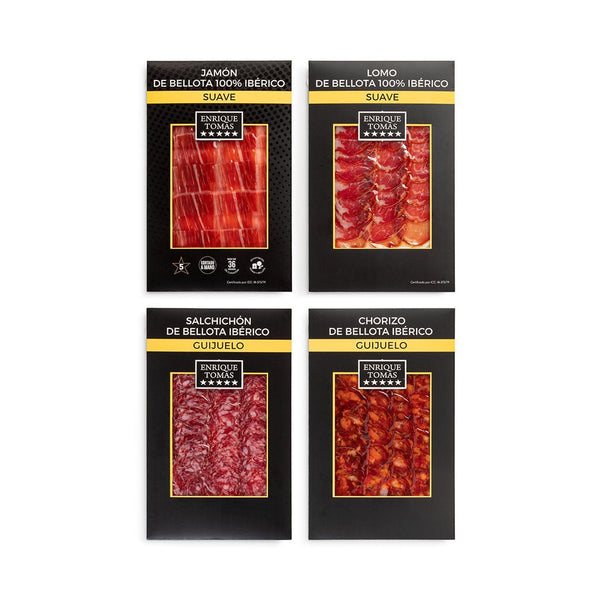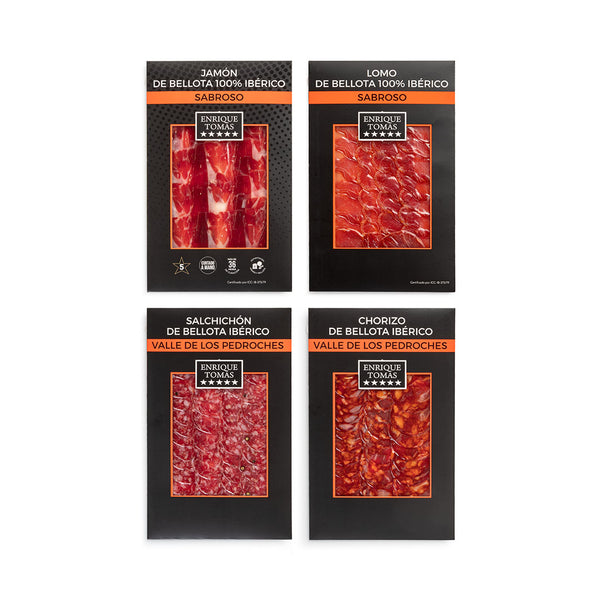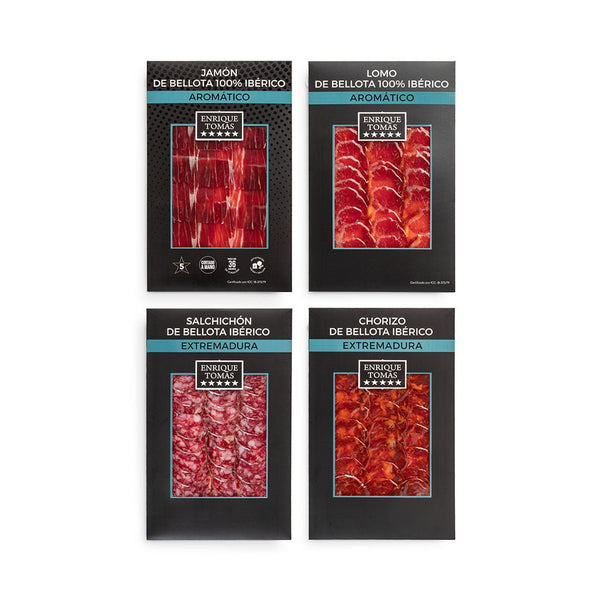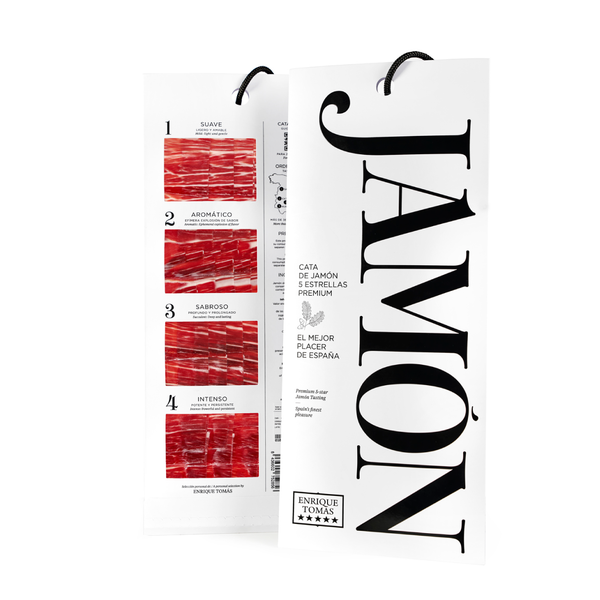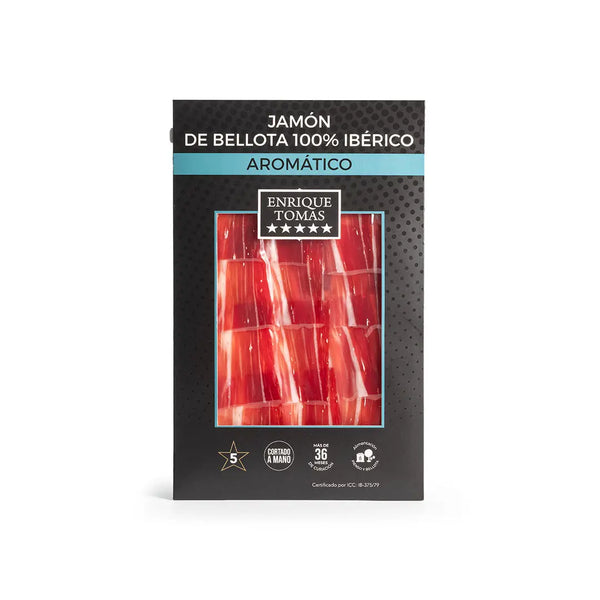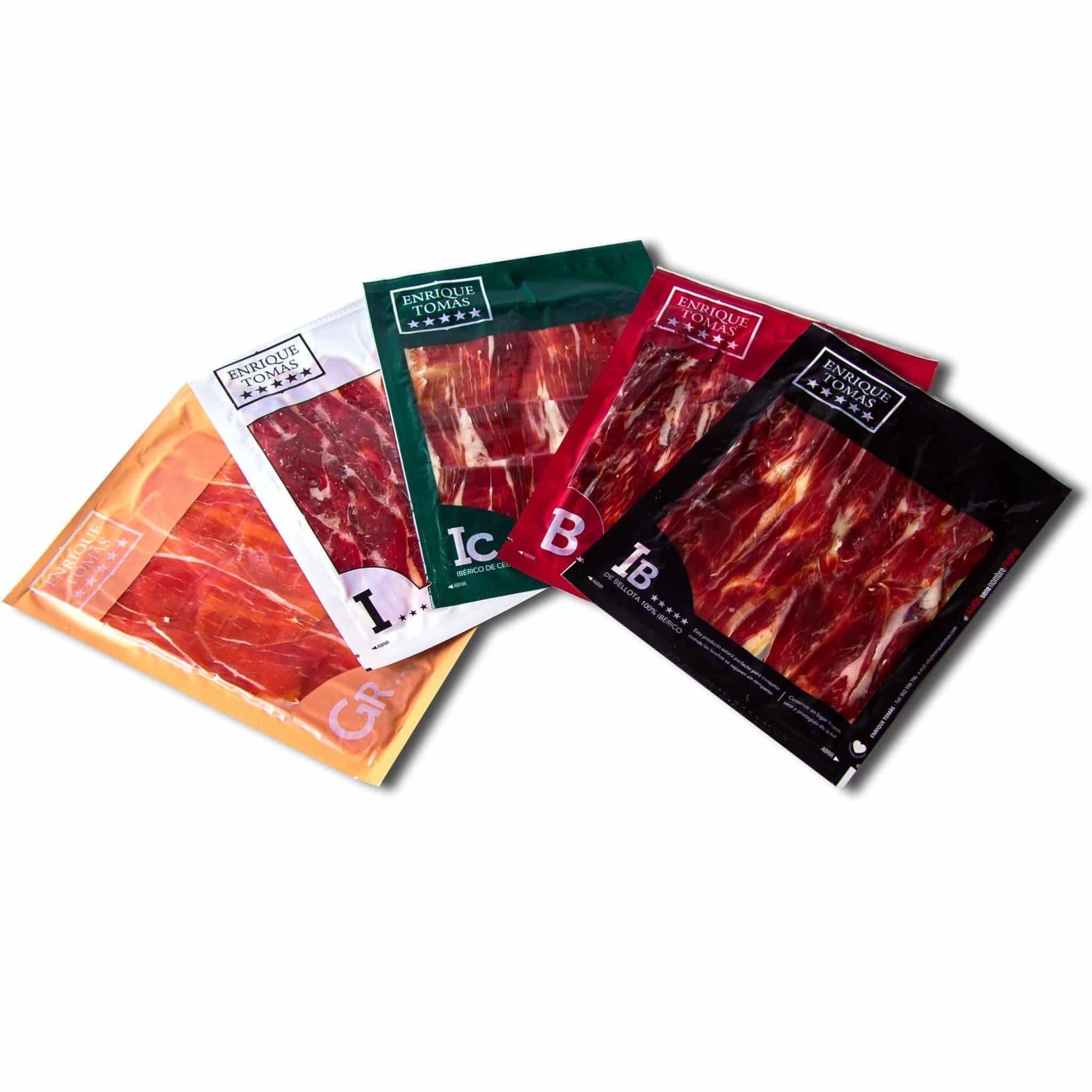
Know the different types of Jamón Ibérico
Jamón ibérico/Iberian ham is a unique product in the world that can only be obtained from the Iberian breed of pigs native to our peninsula. This situation is the reason why in our country we have been dedicated for centuries to the curing of its meat, thus becoming professionals of the best product made in Spain.
But, do you want to be an expert? Get to know the types of Iberian ham that exist and become familiar with the culture of Jamón/ham from the inside, for Enrique Tomás it is a pleasure to explain it to you!
Types of Jamón ibérico
A pig's breed, its diet, and its curing time and caring are factors that influence the classification of Jamón into one group or another.
According to the pig’s breed
Iberian ham comes from the Iberian pig, which has genetic characteristics that distinguish it from other pigs of the same species. One of its main characteristics is its ability to infiltrate fat into the muscle; this is the main reason why Iberian ham has such an exquisite flavor, like melting in your mouth.
Jamón from the Iberian Peninsula (jamón ibérico) is classified according to the percentage of Iberian breed: 50%, 75%, or 100%. The 100% Iberian breed is the only one called "Pata Negra", which comes from a pig whose mother and father are 100% Iberian breed. The other types of Jamón/ham come from an Iberian mother and a 50% Iberian father or from another a white pig. Therefore, the result will be a 50% or 75% Iberian ham accordingly.
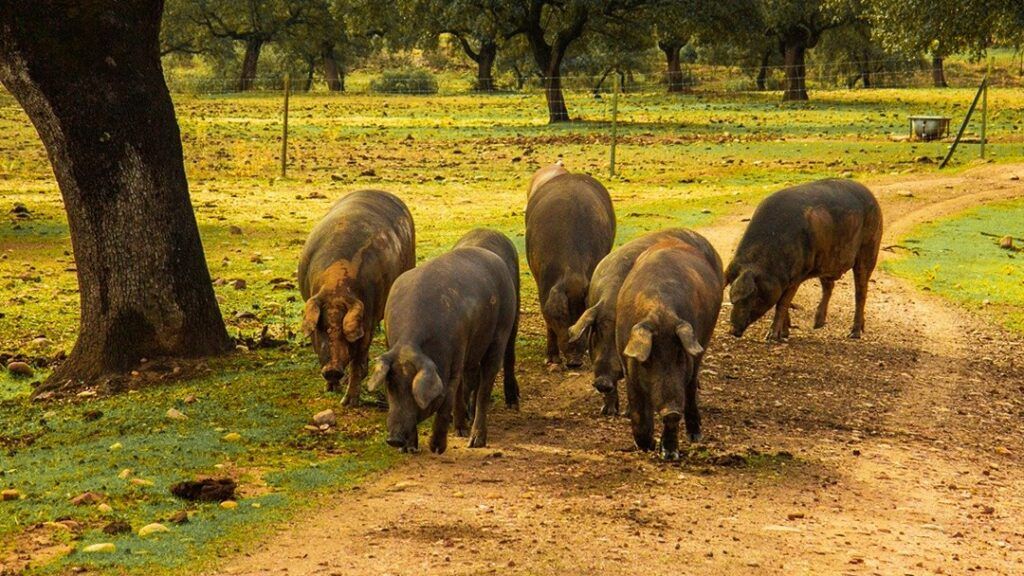
According to the pig's diet
Iberian pigs are fed feed until they reach 100 kg. From that point on, the producer decides what amount of Jamón-ham, Paleta-shoulder "iberico de cebo" or "iberico de bellota" he wants to market. Consequently, he decides which pigs are allowed to roam freely during the "montanera" season and which are not.
Jamón Ibérico de cebo
This type of Jamón is obtained from pigs fed on feed and cereal throughout their life, which is why the pigs receive this name and are raised entirely on the farm.
Jamón de Cebo de Campo Ibérico
This Jamón comes from pigs that have lived in freedom for part of their lives, enjoying wild fruits and herbs while grazing in the pastures. Even so, its main diet has been based on feed and cereals, in a controlled manner, until reaching its optimum weight.
Jamón de Bellota Ibérico
This delicacy Jamon de Bellota Ibérico, on the other hand, is from pigs that have gone through the "montanera", the last fattening phase of the pigs, which takes place from October to February in the pastures.
During the winter, the pigs are released into the wild to feed on acorns and roam freely. Due to the ability of the Iberian pigs to absorb fat into the muscle, to a diet rich in acorns and natural products, and to the activity of the animals during these almost five months, the meat of their front and hind legs is particularly juicy and delicious.



Additionally, those pigs fed in this way and who are 100% Iberian are called "Jamón Pata Negra". This type of Jamón is known worldwide as the best Spanish Jamón.
Selection of the “Bellota” Iberian hog
What kind of pigs/hogs are destined for the "montanera"? This depends on the season and, above all, on the weather, as happens with a grape harvest or a harvest. Based on the amount of acorns that nature provides each year, the manager of each livestock farm decides how many Iberian pigs will be released.
In this way, he will prevent them from lacking natural food (acorns and wild fruits), which is crucial to fattening properly and completing the "montanera" period, which usually runs from November to February.
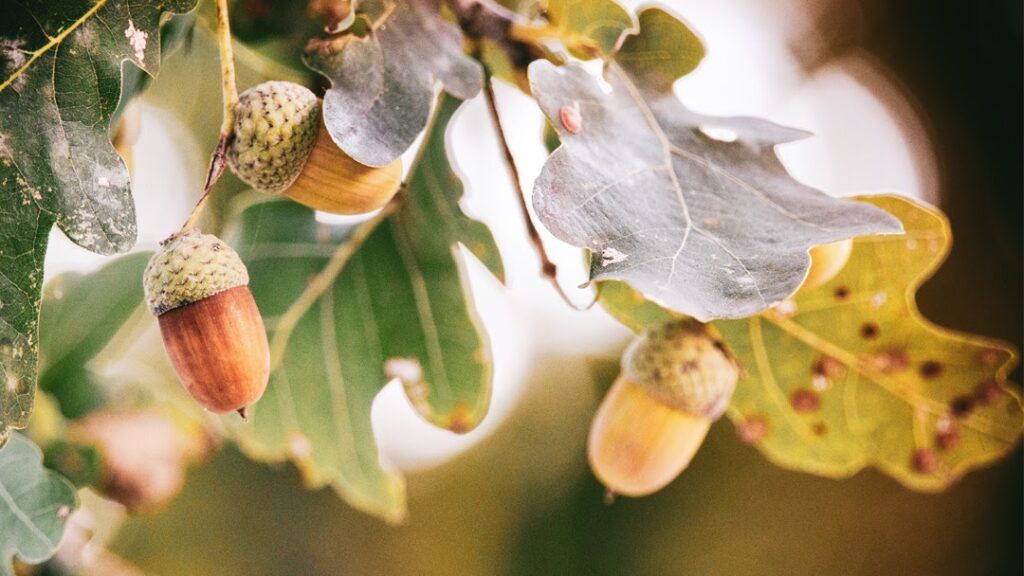
Acorns, food of the Iberian pig during Montanera season
Flavors of Jamón Ibérico
Depending on how the pigs are raised and how they are produced
A ham can also be classified according to its place of origin, a factor that directly affects its flavor. According to its "denomination of origin" or region of origin, the ham is usually treated differently. These factors will contribute to the flavor differences. As we say at Enrique Tomás, "the "cooking" is everything".
What exactly is this cooking? This is the preservation of the leg in particular conditions and for a specific amount of time so that, slowly, it becomes the delicacy we eat.
- The mild or smooth flavor is the most delicate, it is tasty without invading or leaving a trace in the mouth. If we do not know the recipient's taste, this ham is the ideal gift to give because it is usually liked by everyone.
- The most popular and classic flavor among jamón lovers and connoisseurs is the intense flavor. It is, however, quite strong for more delicate palates; it is full-bodied from start to finish during tasting, as well as afterwards, since it lingers after the ham has been consumed.
- The aromatic flavor enters our bodies through the nose rather than the palate, as the name suggests. We detect a delicate aroma as soon as we cut it, making us salivate. It has a round shape in the mouth, but once consumed, it leaves your palate free of fat or salt.
- The tasty flavor is a pure explosion of flavor that varies and intensifies as our palate gets to know it. It keeps on surprising us, until it has reached our stomach. It is unmistakable.
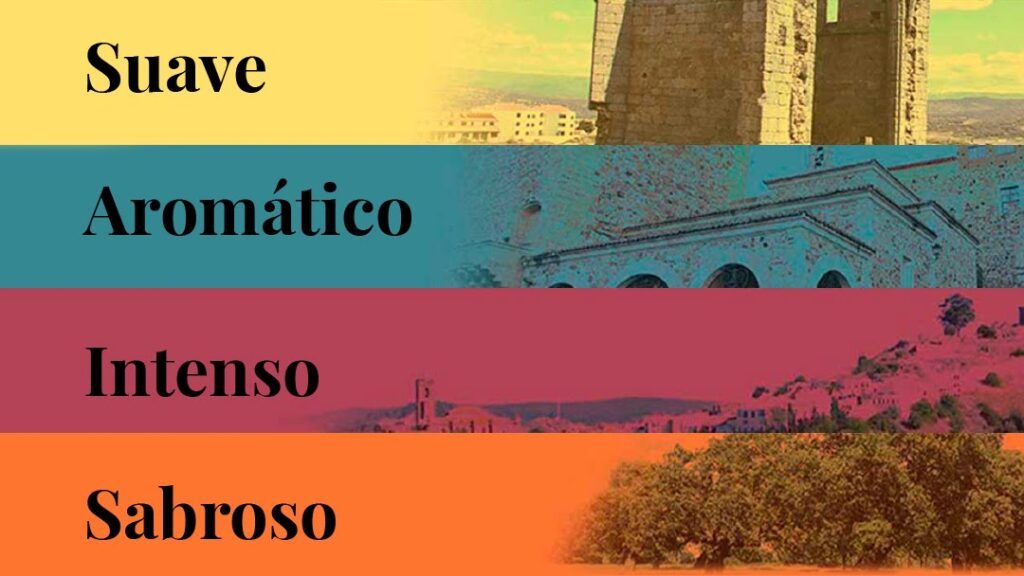
What types of Jamón are there besides Jamón Ibérico?
Non-Iberian or Gran Reserva ham/Jamón Gran Reserva
Finally, it's important to remember that non-Iberian ham, also known as Jamón Gran Reserva , and Iberian ham are unrelated! White pigs provide the shoulder or back leg for Gran Reserva ham, which is known as Jamón Gran Reserva at Enrique Tomás. The Jamón/ham obtained from them requires fewer months of curing, and because this breed lacks the ability to infiltrate fat into muscle, the pigs' diet and exercise levels have no bearing on the final product.
Gran Reserva or Iberian?
Gran Reserva ham will never be as juicy as Iberian ham for the mere fact that the latter infiltrates the fat into the muscle. However, again it depends on the palate and the use we want to make of it. Obviously, the quality of Iberian ham is superior, but the quality of a good Gran Reserva ham such as our Jamón Gran Reserva has nothing to envy to that of some of the basic Iberian hams on the market. Learn more about their differences in: "Differences between Gran Reserva and Iberian ham".

That said, now that you know the types of Iberian ham and the characteristics of each one, choose the one that best suits you and enjoy all its flavor with your family. And if you are not sure, we have the solution!
Our recommendation is that you do your own tasting to find out if your Jamón is the intense one or rather the mild one, or both, depending also on the occasion and the moment. Enter our online shop and discover all your options.
